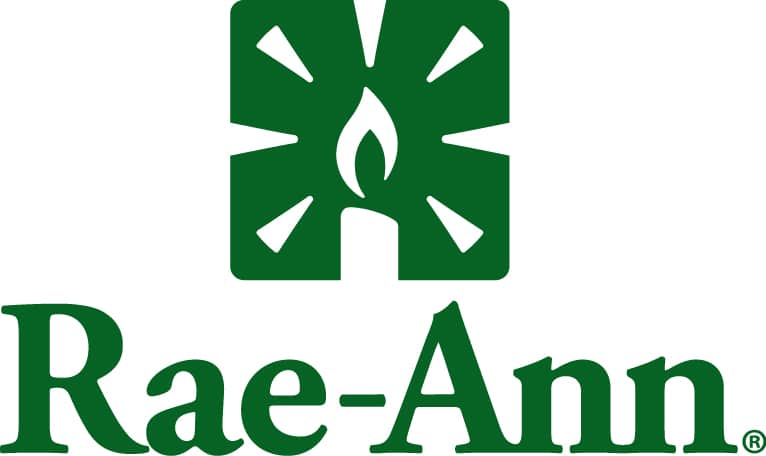The Tax Cuts and Jobs Act (TCJA) significantly boosted the potential value of bonus depreciation for taxpayers — but only for a limited duration. Business owners should plan accordingly as first-year depreciation will begin to decline from 100% after 2022.
Bonus Depreciation Expanded Under the TCJA
Bonus depreciation has been available in varying amounts for some time. Immediately prior to the passage of the TCJA, for example, taxpayers generally could claim a depreciation deduction for 50% of the purchase price of qualified property in the first year — as opposed to deducting smaller amounts over the useful life of the property under the modified accelerated cost recovery system (MACRS).
The TCJA expanded the deduction to 100% in the year qualified property is placed in service through 2022, with the amount dropping each subsequent year by 20%, until bonus depreciation sunsets in 2027, unless Congress acts to extend it. Special rules apply to property with longer recovery periods.
Types of Qualified Property
Businesses can take advantage of the deduction by purchasing, among other things, property with a useful life of 20 years or less. That includes computer systems, software, certain vehicles, machinery, equipment, and office furniture.
Both new and used property can qualify. Used property generally qualifies if it wasn’t:
- Used by the taxpayer or a predecessor before acquiring it,
- Acquired from a related party, and
- Acquired as part of a tax-free transaction.
Qualified improvement property (generally, interior improvements to nonresidential property, excluding elevators, escalators, interior structural framework, and building expansion) also qualify for bonus depreciation. A drafting error in the TCJA indicated otherwise, but the CARES Act, enacted in 2020, retroactively made such property eligible for bonus depreciation. Taxpayers that placed qualified improvement property in service in 2018, 2019, or 2020 may, generally, now claim any related deductions not claimed then — subject to certain restrictions.
The Placed-in-Service Requirement
Buildings themselves aren’t eligible for bonus depreciation, with their useful life of 27.5 (residential) or 39 (commercial) years — but cost segregation studies can help businesses identify components that might be. These studies identify parts of real property that are actually tangible personal property. Such property has shorter depreciation recovery periods and therefore qualifies for bonus depreciation in the year placed in service.
The placed-in-service requirement is particularly critical for those wishing to claim 100% bonus depreciation before the maximum deduction amount falls to 80% in 2023. With the continuing shipping delays and shortages in labor, materials, and supplies, taxpayers should place their orders promptly to increase the odds of being able to deploy qualifying property in their businesses before year-end.
Additionally, the IRS automatically applies bonus depreciation unless a taxpayer opts out. Elections apply to all qualified property in the same class of property that is placed in service in the same tax year (for example, all five-year MACRS property).
Bonus Depreciation vs. Section 179 Expensing
Taxpayers sometimes confuse bonus depreciation with Sec. 179 expensing. The two tax breaks are similar, but distinct.
Like bonus deprecation, Sec. 179 allows a taxpayer to deduct 100% of the purchase price of new and used eligible assets. Eligible assets include software, computer and office equipment, certain vehicles and machinery, as well as qualified improvement property.
But Sec. 179 is subject to some limits that don’t apply to bonus depreciation. For example, the maximum allowable deduction for 2022 is $1.08 million.
In addition, the deduction is intended to benefit small- and medium-sized businesses so it begins phasing out on a dollar-for-dollar basis when qualifying property purchases exceed $2.7 million. In other words, the deduction isn’t available if the cost of Sec. 179 property placed in service this year is $3.78 million or more.
The Sec. 179 deduction also is limited by the amount of a business’s taxable income; applying the deduction can’t create a loss for the business. Any cost not deductible in the first year can be carried over to the next year for an unlimited number of years. Such carried-over costs must be deducted according to age — for example, costs carried over from 2019 must be deducted before those carried over from 2020.
Alternatively, the business can claim the excess as bonus depreciation in the first year. For example, say you purchase machinery that costs $20,000 but, exclusive of that amount, have only $15,000 in income for the year it’s placed in service. Presuming you’re otherwise eligible, you can deduct $15,000 under Sec. 179 and the remaining $5,000 as bonus depreciation.
Also in contrast to bonus depreciation, the Sec. 179 deduction isn’t automatic. You must claim it on a property-by-property basis.
Some Caveats
At first glance, bonus depreciation can seem like a no-brainer. However, it’s not necessarily advisable in every situation.
For example, taxpayers who claim the qualified business income (QBI) deduction for pass-through businesses could find that bonus depreciation backfires. Bonus depreciation reduces your taxable income, which limits your QBI deduction. As with bonus depreciation, the QBI deduction expires in 2026, so you might want to maximize it.
The QBI deduction isn’t the only tax break that depends on taxable income. Increasing your depreciation deduction also could affect the value of expiring net operating losses and charitable contribution and credit carryforwards.
And deduction acceleration strategies always should take into account tax bracket expectations going forward. The value of any deduction is higher when you’re subject to higher tax rates. Newer businesses that currently have relatively low incomes might prefer to spread out depreciation, for example. With bonus depreciation, though, you’ll also need to account for the coming declines in the maximum deduction amounts.
Buy Now, Decide Later
To maximize your options, it may be wise to purchase bonus depreciation qualifying property before year-end. We can help you chart the most advantageous course of action based on your specific circumstances and the upcoming changes in tax law.
© 2022
Related Insights
Featured Post

Featured Client Testimonials
BW is a true partner to us. Their knowledge, expertise, and service are a valuable resource to us and play an important role in our success!
John Allen - Vice President of Finance, Kaufman Container

Featured Client Testimonials
I appreciate the exceptional tax advice we received over the years. The (BW team) has a good grasp of our business needs. Thank you for your excellent service.
John Griffiths - Owner, Rae Ann, Inc.

Featured Client Testimonials
The BW team has been fantastic to work with; both the team member at our office as well as at the partner level. Any issues or concerns are handled very efficiently and effectively.
Kelley Needham - Chief Executive Officer, Epilepsy Association

Featured Client Testimonials
Barnes Wendling has been our company accountants for over seven years. Their knowledge has been instrumental in helping us grow strategically during this time. And although we’ve seen many changes in our economy that we cannot control, we’ve always been able to trust the Barnes team to be by our side. The Barnes team feels like family. We can’t thank them enough for their support!
Christine Kloss - Controller, AT&F

Featured Client Testimonials
Barnes Wendling has been our company accountants for over 15 years. During this time, the business has grown exceptionally, and Barnes has kept pace, providing accurate, quality advice. Our finances are more efficient than ever, and the expense of hiring Barnes has been a definite positive add to our bottom line. I give my highest recommendation to their firm.
David Miller, MD - President, Retina Associates of Cleveland

Featured Client Testimonials
Barnes Wendling has provided us guidance and recommendations that have strategically helped strengthen our business and position ourselves for growth. We needed to hire a new VP of Finance and Controller this past year, and they were instrumental in helping us find the best candidates for our company.
Sara Blankenship - President, Kaufman Container

Featured Client Testimonials
We value the trust, accuracy of information, and reliability of Barnes Wendling and Mike Essenmacher personally. Mike has been instrumental as a trusted advisor on accounting, tax, and personnel issues. His advice is always accurate, and he is very reliable. His associates are also very talented.
Dominic Ozanne - President and CEO, Ozanne Construction Company

Featured Client Testimonials
We value Barnes Wendling’s expertise with all things accounting so we can operate our business using our strengths and allowing them to be our experts. They have also brought me a few business sale opportunities to allow me to grow my assets.
John Gaydosh - President and Metallurgical Engineer, Ohio Metallurgical Service

Featured Client Testimonials
Barnes Wendling (especially Lena) did a great job with our financials. Everything. It is extremely refreshing and comforting to know that all of our numbers are not only correct, but they are in the right place(s). Your diligence and reporting truly does make me (personally) feel better.
Thomas Adomaitis - Controller, Bialosky Cleveland

Featured Client Testimonials
I can wholeheartedly tell you that I have yet to work with an audit or tax team that have been more helpful, easy to work with, and committed than the team at Barnes Wendling- I have been through three different firms in the last few years.
Michelle Saylor, Former Controller, Aero Mag

Featured Client Testimonials
Floyd Trouten at Barnes Wendling CPAs is an “expert’s expert” when it comes to M & A accounting. Not only does he understand the evolving details of the Tax Code but he also sees the fine points of their application for owners, managers, investors, and financiers.
Mark A. Filippell, Western Reserve Partners

Featured Client Testimonials
The service is amazing at Barnes Wendling CPAs. The benefit is worth more than the cost. Sometimes it’s true that you get what you pay for.
Mark Boucher - Former Owner, Castle Heating & Air









